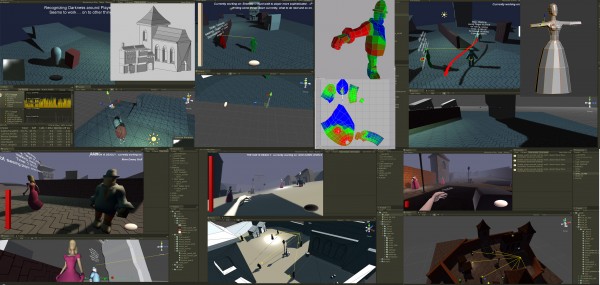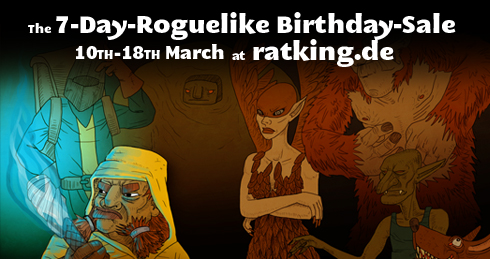Indie Buskers - Yet another game jam?
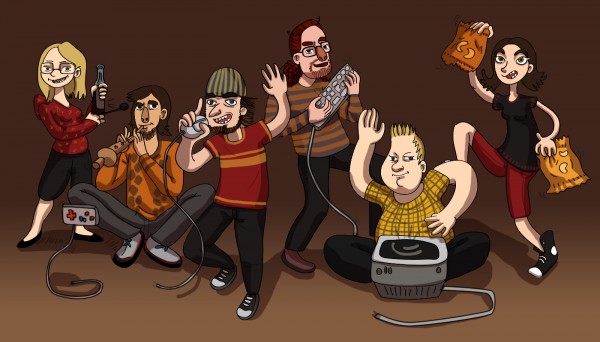
Introduction
Rock, Paper, Shotgun titled “2012 will be the year of the gamejam” and it absolutely is! Ludum Dare has more entries than ever before, the Global Game Jam is in the Guiness Book of Records for being the biggest jam ever and Anna Anthropy argues in her book “Rise of the Video game Zinesters” about everybody can make art or communicate issues with games. And at this point we drop in: five game devs who regularly prove their passion at Ludum Dare happenings are doing their own jam.
But why another gamejam right between the tenth anniversary of Ludum Dare and the Molyjam? Why do we want your moneys for things nearly every game dev does? And who the hell are we?
The Buskers are all one of those notorious indies. Full of crazy ideas, but with empty pockets. All of us sold at least one game until now. Most of them came into existence through participation in game jams. We are all more or less known and successful and we all love to produce games to beat the band.
So Ludum Dare is were everything started. The three game devs Pekuja, Sos and Ratking whined about their thin purses. No money. No games. Poor things. So they planned to do it the old way: Taking out their instruments to the streets and play songs to cheer up their audience and get some pennies back in order to fill their fridge.
But wait. They live in Finland, Poland and Germany. They don't know how to use guitars - all they are able to do is making games! So why not a game jam!? In open (web) space, with one or two more friends (soon they invited Tametick from Austria and Sophie Houlden from England) and a bit more interaction than just “Please put some money in the hat”.
The beginning
Since things were settled from this very moment (March 13th) everything happened very fast. We discussed everything via chat and mail, whereby most decisions happened immediately coupled with an overflow of motivation. If there wouldn't be this annoying marketing, the necessity to do an announcement to reach the audience and certain organisational issues, we would have started right off that moment. The date was chosen a bit further from that very present up to March 31st - April 1st, which some days later was selected also for another jam that will go down in history as the MolyJam. Since Peter Molyneux AND Peter Molydeux are an great inspiration for many game devs and both have a bigger audience than us together, we changed the date.
Which is absolutely lucky, because as you will see there was organisation needed to be done for all of us.
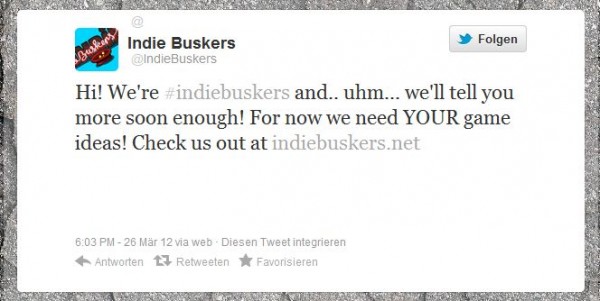
In the beginning there was the website (www.indiebuskers.net, programmed by Sos) and the website was with Twitter (March 26th). We asked hyper-influencial nice people to do us a favour and tweet about the Buskers. The wonderful Chris Priestman helped us with an article on Indie Games Magazine about the mysterious Buskers that others picked up very fast. At this time the website was grey, nothing on it but counters and question marks. It was a little bit crazy, but through this we really got people interested in this thing very fast. We were purely asking for game ideas at this time. No more or less! And then the first 400 followers popped up. Some felt twitted, some were suspicious, but most of them just were attracted by the chance to give away their game ideas!
We need ideas!
At this time we rotational took over the Twitter channel (@IndieBuskers), which really became a day job! Just retweeting, filtering and answering ... and keep in mind that twitter is limiting the tweets per day! When I was trying to make some things clearer they just told me that I reached this limit (250 tweets a day). You can make the final apologizing tweet to your audience by deleting old messages, by the way.
And although we would have needed a proper public relation strategy or just a way to communicate our idea, we decided against straight forward polished marketing blabla. Chaos was more fun and fit to the bunch of us.
With Twitter and our quest for ideas a little discussion arose, about how much worth and important ideas are. As jam veterans we have plenty of ideas, but we asked people to give us their ideas nonetheless; to get challenged by them and involve the audience. And this was enormous fun! The best thing right in the beginning of the jam! Although nobody knew who we are and what purpose their ideas will serve, they tweeted and posted so many awesome things, all of us totally freaked out.
Because we were not communicating too much about the issue of copyrights, of course people also wrote that we can't have their ideas or if we use them we should give them money, etc. We tried to explain that we don't steal ideas, but with our tweets three hundred other ones came and go. But luckily many people picked up the discussion and most seem to recognize that ideas are important to inspire and get started BUT they also need to be made and mostly just force a setting or beginning of the game's real gameplay. Most ideas didn't even have any description of details like gameplay, how to play it, winning/losing situations or even the type of perspective.
Although this is not completely the truth. There were a bunch of people who loved to see their favourite games to be made. Some just wished for the good old games remade they love, while others came up with three-page concepts of how exactly the game could look or work like! Most of the ideas were too much for 48 hours, which was not exactly clear to everybody due to our lack of description, but well, this was our problem throughout the jam.
Very much favoured, by the way, were games like “Minecraft but with X”, kittens and monkeys or “games like Y but deeper”, “like Z but with RPG elements” and tons of platformers and games where you start in a prison.

And although stealing ideas was an issue, we were never accused of stealing the Payed-jam idea from ... let's say Mojam. We felt a little bad about this. They started the bundle and they were the first to do a jam with fellow indies to earn money - for charity! The only difference was, that we were less organised and the money went straight to our purse. Not to children in hospitals!
I think this was just possible by our audience. Most of them are indie devs as ourselves and understood that we needed the money, but were no greedy suckers dare to become rich with stolen ideas.
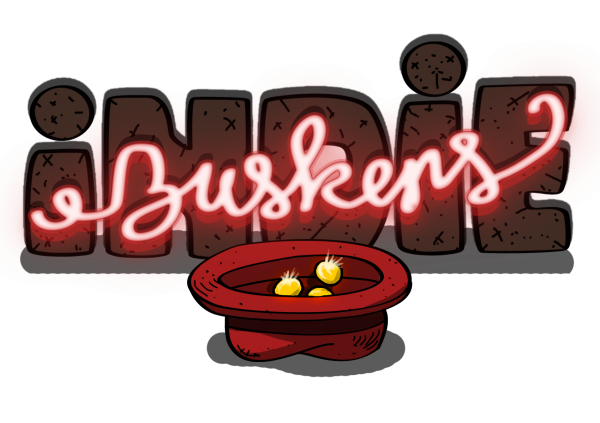
Counters here, Revealing there
From the first tweet on our jam was planned for two weeks later. We didn't have anything to entertain the audience with meanwhile, so we decided to put counters on the website and reveal one Busker after the other within days. Plural! We never expected such a run for the website, for ideas, for us and the Buskers thing! Some folks really got annoyed by our revealing. The website was full of question marks, that were replaced with counters, that were replaced with description not everybody fully understood.
Thus we needed to finally tell them who we are and what we want. We rethought fast and unmasked one Busker after the other within an hour. We used a little revealing quiz were people could guess who is the next one by Youtube clips. Interesting that some thought one of the guys is Notch or Terry Cavanagh.
After revealing us there was the next counter of course, followed up by our intentions and an approximate date.
Since then all of our jokers were already played and even bigger magazines like indiegames.com, PC Gamer or RockPaperShotgun had articles about us, we feared to lose attention. Although the flow was less overwhelming, many people stayed active and kept posting. Even the Angry Game Nerd did...something.
One week before everything happened (April 4th) every dev chose five ideas out of nearly 1,500 postings. We really read all of them! And it was not easy, since few of them were ideas we would have come up with by ourselves (I just speak for team Rat King here).
Again we had to do the big revealing thing to let people vote, which of the 25 ideas they liked enough to see them to be done. In the end about 800 people voted for their favourites.
The idea with the most votes was the vampire idea followed by the office roguelike (about 300 votes). Interesting that Tametick's picked idea had the fewest votes (216), but the resulting game was the most as fun rated game (as far as I noticed, we didn't have chosen/voted “winner” game of our jam).
I'm also very happy that we got all the owners of the chose ideas were named on the website. This really brought things together. (Only one of them was angry about not having implemented the idea himself in hindsight.)
And then the jam finally happened
All of us were extremely excited. I couldn't think of anything but the jam. We designed a new overwhelming website (overwhelmed by icons, but I think again it fitted us more than a stylish fancy web design).
Since the week before start we also had an IRC channel (#indiebuskers on QuakeNet) we opened for all the interested people. The run was cool, we had to answer so many questions and could catch up some of the missing issues. There should also be livestreaming, WIP screenshots, pre-versions in a bundle and of course the hat money counter. Everyone of us did (or let do) sketches / mockups of the five chosen game concepts, so people could imagine where the journey should go.
Since the website was up, folks started to donate for us. There were no bundles yet - nevertheless we broke the $1,000 right before the jam begun. The Buskers' Twitter account was nearly neglected from this point, but we all met in chat, tweeted via our own channels and you even could watch all the Busker streams at once on one page (you can still re-watch them).
From this point everything was about progress: we tried to raise our progress bars displayed on the site, implement as much us possible and do new screenshots from time to time.
Vampire: The Shadow Project Masquerade aka THE SUN IS DEADLY
To go a bit more in detail about our project, the theme we absolutely hoped for did it:
"It might be cool to have a game where you control objects to block sunlight to create a path of darkness - so that a vampire can get to their intended victim." (by @EgoAnt)
How much we love Thief! It's one of the games that deeply influenced us in setting, gamedesign and storytelling. We never dared to do a full-length stealth game, but this jam was the chance to do it! Plus there was this new element of building your own dynamic shadows with crates and other objects! Yeah!
Our planning for this game was a bit quirky. We were very self-confident, because we are two experienced designers, especially in game jams.
So why not do three characters - a guard, female and male citizens (with exchangeable heads)? Plus a whole awesome city built from a construction set with exchangeable windows, doors and levels. Of course a game like this needs sounds, to give a proper feedback. And music. And feedback, particle effects, etc.
How super-optimistic and stupid we were! In the end we got a game where you had to find the one and only holy virgin to trick her to the cemetery with a jewel case. You need to walk in the shadows, because it is bright daytime and, you know, "The Sun Is Deadly". On your way there are more victims to satisfy your hunger with. But they will also alarm the guards who protect the city of women (due to the fact that I hadn't have enough time to prepare the male character with the exchangeable heads).
When the imaginary clock was ringing (i.e. the jam ended), the game was super-hard, had no sounds, the tutorial was full of punishment instead of one reward after the other.
The shadow thing - we did a Plan B if it won't work at all - performed very well from the beginning. The tricky thing about Thief though weren't the shadows (who could have guessed!?), but the enemies in combination with physics.
BUT! We did it! This jam was an emotional roller coaster. Although this is the first jam rule we tell everyone, we planned too much for the game. The idea was extremely complicated from the beginning. Sometimes I wished for the pigeon RPG idea, where you just fly and shit around!
Sometimes I wonder if fast and fun games only are appropriate for game jams. But we are always very ambitious, so don't bend yourself too much, a jam should be particularly fun for you! This was something we needed to tell ourselves sometimes, because “The Sun Is Deadly” was so damn hard. And fun if you just accept certain rules! Game jams, tricky but hilarious fun things!
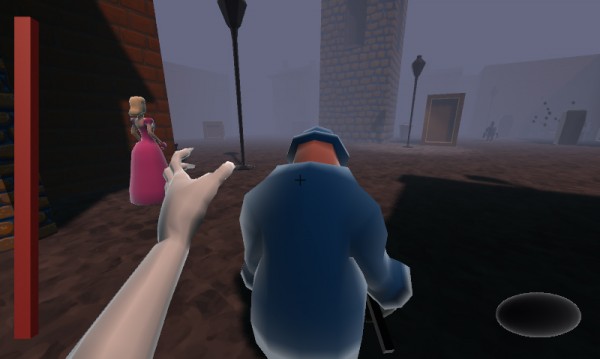
Conclusion
We did the first livestream while working under time pressure. And also the fact that there are people watching us struggling for their enjoyment or to learn something was very amusing and motivating (and a little bit frightening). The possibility to get instant feedback is priceless, too.
We are very thankful for all the people around that were so interested in the Indie Buskers! Until today we raised about $4500, which is especially amazing to the fact that many people gave more than just $1. The highest donation is by Michael Todd with $250 bucks. The average donation was about $10, although now decreasing to $8, because the buskers effect is just amazing while they do a live performance. Nonetheless, I think we also gained many fans (notably other game developers), that just wanted to support fellow indies. Thanks, you wonderful people! The Rat King and the other Buskers had an awesome time – our gratitude to you!
-------------------------
Until the end of the month (April 2012) you can still support the Buskers and get the games! Just visit indiebuskers.net !!!

